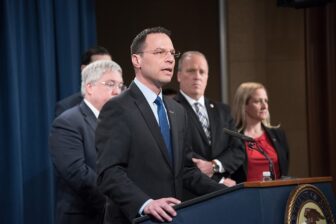
Rising Electricity Bills? PJM’s Clean Energy Delays Are to Blame
- Posted on
- By Jake Schwartz
- In Blog, Federal, Federal Actions
Once again, PJM’s bias against clean energy is driving our electricity prices higher. The Pennsylvania-Jersey-Maryland Interconnection (PJM), which manages the electricity grid in 13 states and the District of Columbia, has a responsibility to prioritize affordability and reliability – and so far, it has failed.
PJM’s Annual Capacity Auction and Fossil Fuels Are Raising Electricity Costs
Every year, PJM holds a capacity auction to determine how much we are going to pay for future electricity. On July 23, the results of this year’s auction became public, and yet again, prices are set to rise throughout much of the region.

As demand continues to rise, PJM continues to fail to meet the moment. Instead of connecting the countless clean energy projects that have been stuck in a decade-long queue, PJM has fast-tracked fossil fuel plants to jump the line. But oil and gas are finite, and therefore less reliable and affordable than solar and wind.
Pushback from politicians, led by Pennsylvania Governor Josh Shapiro, has successfully convinced PJM to institute a price cap, putting a limit on how high prices can go. Ratepayers serviced by BG&E and Dominion Energy might pay less next year thanks to this price cap, but it is only a band-aid, and the rest of the region will still face higher costs. However, this shows that PJM’s policies can be challenged. Political leaders can successfully fight for reforms that help our pocketbooks.
We’re Paying the Price for PJM’s Expensive and Outdated Decision
In Maryland, prices are rising for another reason as well. Last year, PJM mandated that two coal plants had to remain online even though their owners wanted to retire them. Stuck with its fossil fuel bias, PJM saw no other alternative to meet energy demand than to keep inefficient coal plants online past their retirement date. This decision will cost some Marylanders up to $60 more per month because PJM prioritized coal plants that are far more expensive than their clean energy equivalents.
Overdue Reforms and New Leadership

Despite these challenges with PJM, there are exciting reforms being discussed. For the first time in decades, PJM is filling two board seats and the CEO position. New leadership could usher in long–overdue reforms, or, if fossil fuel interests fill the seats, we could see more of the same.
This winter, PJM is reforming the Reliability Must Run (RMR) process that forced the Maryland coal plants to stay online. Consumers in Maryland and across the region must make it clear that we can never again be required to pay more for electricity to keep coal plants online.
While there have been a series of taskforce meetings all summer to discuss PJM reforms, many have been cancelled without explanation. It seems clear they do not care about this push for modernization. We have to make them care.
How You Can Help: Join the Fight for a Cleaner, More Affordable Electricity
 There are several ways to hold PJM accountable, from urging our Governors to take action to organizing rallies outside PJM’s headquarters. Educating ourselves on why our electricity bills are rising is the first step. Join us and take action to show PJM that they cannot hide behind their acronym: ratepayers know when they’re getting screwed over.
There are several ways to hold PJM accountable, from urging our Governors to take action to organizing rallies outside PJM’s headquarters. Educating ourselves on why our electricity bills are rising is the first step. Join us and take action to show PJM that they cannot hide behind their acronym: ratepayers know when they’re getting screwed over.
On September 11, join our webinar to learn how you can help fight against expensive, fossil-fuel-dependent electricity.
About the author:
Jake Schwartz (he/him) is the Federal Campaigns Manager at CCAN. Jake grew up in Philly (Go Birds!) and has organized on environmental and electoral campaigns across the country, from Oregon to Indiana. His career in climate organizing began at Green Corps, an environmental advocacy fellowship, where he worked on local, state, and federal campaigns.
Most recently, he was on the Harris-Walz campaign where he helped run the Delegate Operations and then Climate Engagement teams. Outside of work, you can find him running or biking in Rock Creek Park or reading at Meridian Hill Park.

